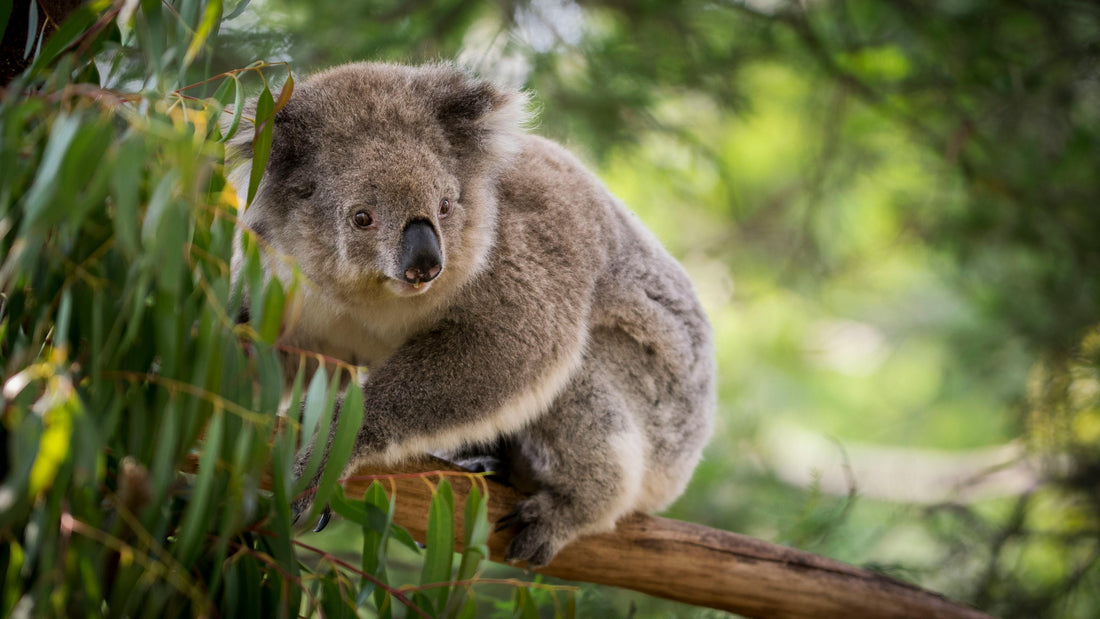Koalas, with their captivating charm, naturally draw children in, creating an ideal starting point for exploring the wonders of the natural world. This initial fascination can blossom into a lifelong appreciation for nature. Their struggles underscore the difficulties faced by countless other species and the overall well-being of Australia's bushland ecosystem. Here are some amazing facts about koalas for kids who want to learn more about these fascinating animals!

Everything Kids Want To Know About Koalas
It's easy to see why kids adore koalas! These unique Australian animals possess a combination of traits that make them incredibly endearing. For starters, their appearance is a huge draw. With their round, fluffy ears, prominent black noses, and soft, plump bodies, koalas strongly resemble living teddy bears. This instantly makes them appealing, creating a sense of warmth and cuddliness that children can't resist. It's no wonder they're often affectionately called "koala bears," even though they're actually marsupials. Continue reading to learn more about koalas.

A List of Fascinating Koala Trivia
Beyond their cuddly looks, the sight of baby koalas- called joeys - clinging to their mothers' backs is incredibly cute. This dependent behavior evokes a strong sense of innocence and vulnerability that resonates deeply with children who still feel this deep connection with their own parents. As animals found only in Australia, their distinct look and specialized diet of eucalyptus leaves make them fascinating creatures to learn about. To learn more about the habitat, behavior, anatomy, diet, and other aspects of a koala's life, explore this list of fun koala facts.

(1) Koalas are not actually bears.
Although often referred to as "koala bears," koalas are not bears at all. They're actually marsupials, a type of mammal known for giving birth to underdeveloped young that finish growing in a pouch. Their closest living relatives are wombats.
(2) The anatomy of koalas is perfect for tree dwelling.
Koalas are remarkably adapted to their tree-dwelling (arboreal) existence. They possess powerful limbs, textured paw pads, and long, sharp claws that provide an excellent grip on branches. Adding to their climbing prowess, their front paws feature two opposable digits for enhanced security.
(3) Koalas can only be found in Australia.
Koalas are found exclusively in Australia. They don't live anywhere else in the world. You'll find their natural habitat stretched across the eastern and southeastern coastal areas of the continent, including the states of Queensland, New South Wales, Victoria, and South Australia.
(4) Koalas live in woodlands and Eucalyptus forests.
Eucalyptus trees serve as a safe, arboreal home for koalas. By dwelling high in the branches, they're protected from most ground-based predators such as dingoes and domestic dogs. Plus, their unique skeletal structure, complete with a dense fur "cushion" on their rump, lets them sit comfortably in tree forks for long stretches.
(5) Eucalyptus leaves are their sole food source.
Koalas feed almost exclusively on eucalyptus leaves, making up nearly their entire diet.These leaves are highly toxic to most other animals due to their chemical compounds, like tannins and oils. However, koalas possess a unique liver and a very long cecum (an intestinal pouch) packed with specialized bacteria that break down these toxins, allowing them to safely digest the leaves.
(6) Koalas sleep (or rest) for most of the day.
Their highly specialized diet of tough, toxic eucalyptus leaves demands an incredible amount of energy to digest and extract limited nutrients. To balance this high energy expenditure with the low energy input from their food, koalas conserve as much energy as they can. That's why they typically sleep or rest for 18 to 20 hours a day, sometimes even extending that to 22 hours—it's their primary survival strategy.
(7) Koalas do not drink water.
The term "koala" is believed to derive from an Aboriginal word signifying "no drink" or "no water." This perfectly describes their unique hydration method: koalas primarily get the moisture they need directly from the eucalyptus leaves they eat, only seeking out water to drink during severe conditions like intense heat, prolonged drought, or bushfires.
(8) Baby koalas are called joeys.
Koala joeys are born remarkably tiny, about the size of a jelly bean, blind and hairless. They immediately crawl into their mother's pouch to continue their development, where they'll stay for around six months, nursing on milk. Once they emerge, they ride on their mother's back for another 6 to 12 months, slowly learning to eat eucalyptus leaves.
(9) Male and female koalas make different vocalizations.
Bellows are the most recognizable koala vocalization. During breeding season, males use these deep, resonant calls to announce their presence and draw in females ready to mate. These bellows also help dominant males assert their social standing, deterring rivals and potentially preventing physical fights. While females don't bellow as often as males, they do use various calls, especially during breeding or when aggressive, which can sometimes sound like a quarrel.
(10) Koalas live longer in captivity than in the wild.
In the wild, koalas typically live for 10 to 12 years on average. However, their lifespan can be significantly reduced, sometimes to just 2 to 3 years, in areas heavily impacted by human activity, such as near highways or housing developments.In contrast, koalas living in well-managed captive environments, like zoos or sanctuaries, often enjoy extended lifespans. With consistent veterinary care, controlled diets, and protection from natural dangers, these koalas can live for 15 to 20 years, with some exceptional individuals reaching 22 or 23 years old.

More Amazing Animal Facts To Share With Your Kids
Animal facts captivate children by connecting with a fundamental human curiosity about the natural world, opening the opportunity emotional, intellectual, and imaginative growth. Here are some more amazing information about animals kids will love to know.





